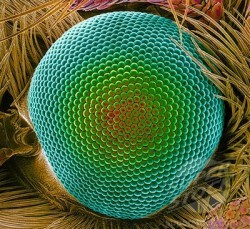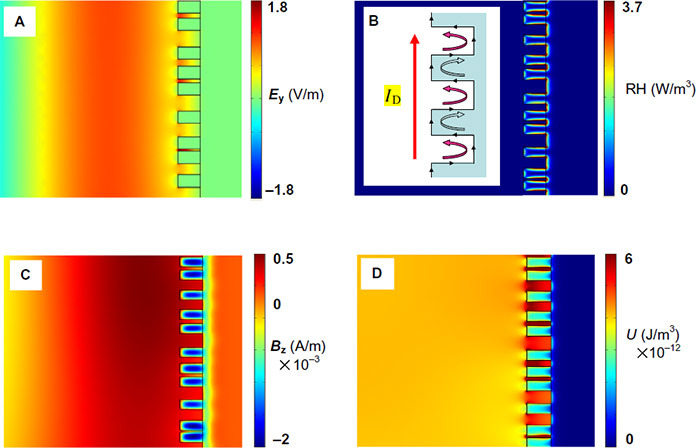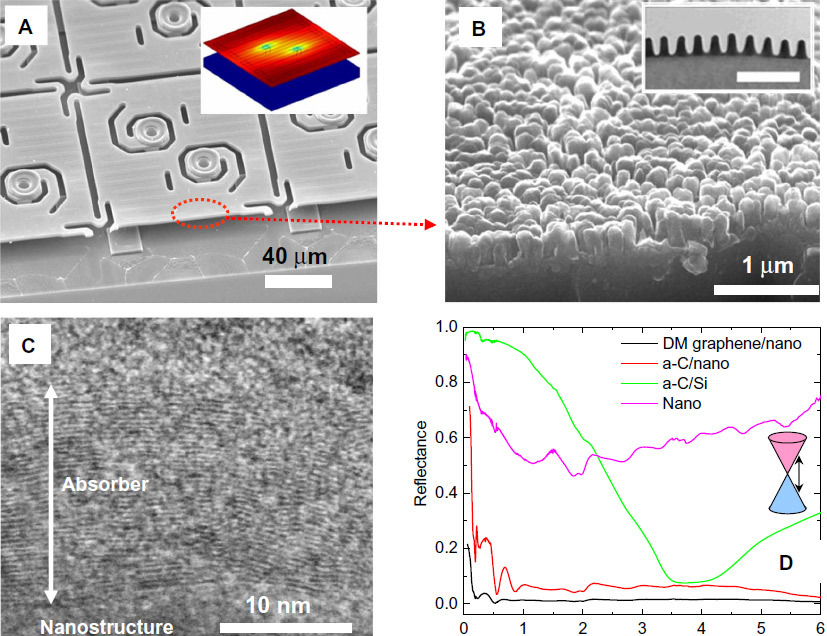The butterfly's eye has become a model for graphene rektenn with record-breaking light absorption
 A group of scientists from the University of Surrey (UK) announced the creation of a 2D material with record numbers. A multilayer graphene film with a recten structure absorbs light in 99% of the range from mid-infrared to ultraviolet. If such a film is used in solar batteries, it is possible to generate electricity even in diffused light reflected from the walls or from the glow of household appliances. That is, the solar panels will work indoors. It is not even called “batteries” when the film is applied to the surface of walls and other objects. (Another question is that the room will then remain almost in total darkness even on a sunny day)
A group of scientists from the University of Surrey (UK) announced the creation of a 2D material with record numbers. A multilayer graphene film with a recten structure absorbs light in 99% of the range from mid-infrared to ultraviolet. If such a film is used in solar batteries, it is possible to generate electricity even in diffused light reflected from the walls or from the glow of household appliances. That is, the solar panels will work indoors. It is not even called “batteries” when the film is applied to the surface of walls and other objects. (Another question is that the room will then remain almost in total darkness even on a sunny day)Instead of the phrase "solar battery" in this case it is better to talk about the "light-absorbing surface."
“The ability to design thin two-dimensional surfaces to absorb light in a wide range is key to a large and constantly growing number of applications, including power engineering, optoelectronics, and spectroscopy,” write the material developers in the abstract of their scientific work . “Although the absorption of light in a wide range is possible in high structures of carbon nanotubes about a millimeter in height, so far it has not been possible to achieve such a result in nanometer structures.”

')
The inconspicuous light-absorbing film, which generates current, will find application in numerous devices of the Internet of things, smart clothes, wearable electronics, smart wallpapers, household appliances, etc.
One of the authors of the scientific work, Professor Ravi Silva (Ravi Silva) explains that in some insects (butterflies, moths, etc.), the eye has completely different principles. Nanotechnologies are applied there, that is, nanostructured surfaces. At such a scale, these elements work as rectenna (rectifying antennas), that is, directly convert the energy of the incident wave field into direct current energy. The interaction of a wavelength of 4 μm with a metal nanoantenna is shown in the illustration.

The sidebar in Figure B below shows a comparison of the surface of the material with the Bicyclus anynana butterfly eye. Figure D shows the reflectivity index of the created material (black graph).

“For many years, people have been looking for applications of graphene for widespread use,” says Silva. - We are finally approaching the point when such applications begin to appear. We did what was previously thought impossible: optimized the incredible optical properties of graphene. ”
Source: https://habr.com/ru/post/390993/
All Articles